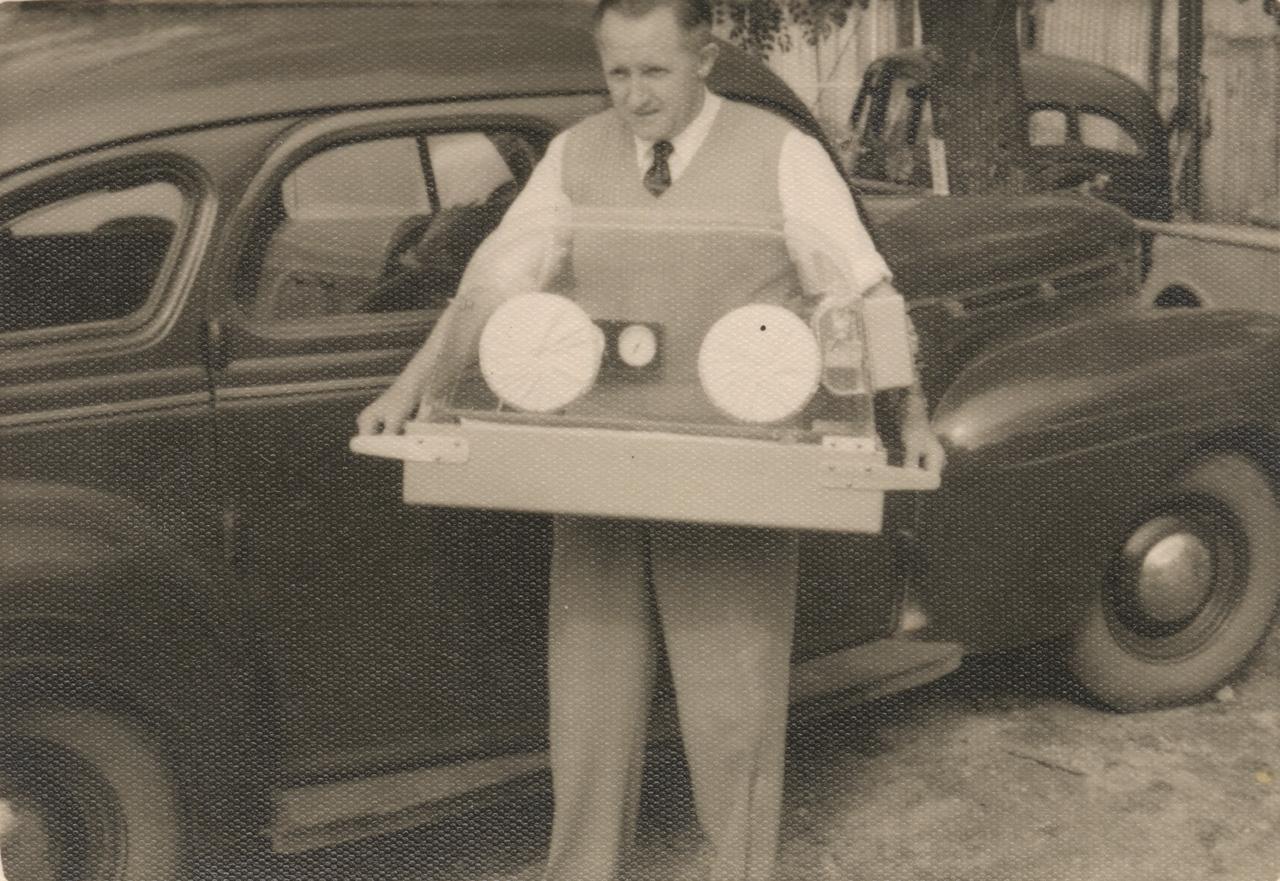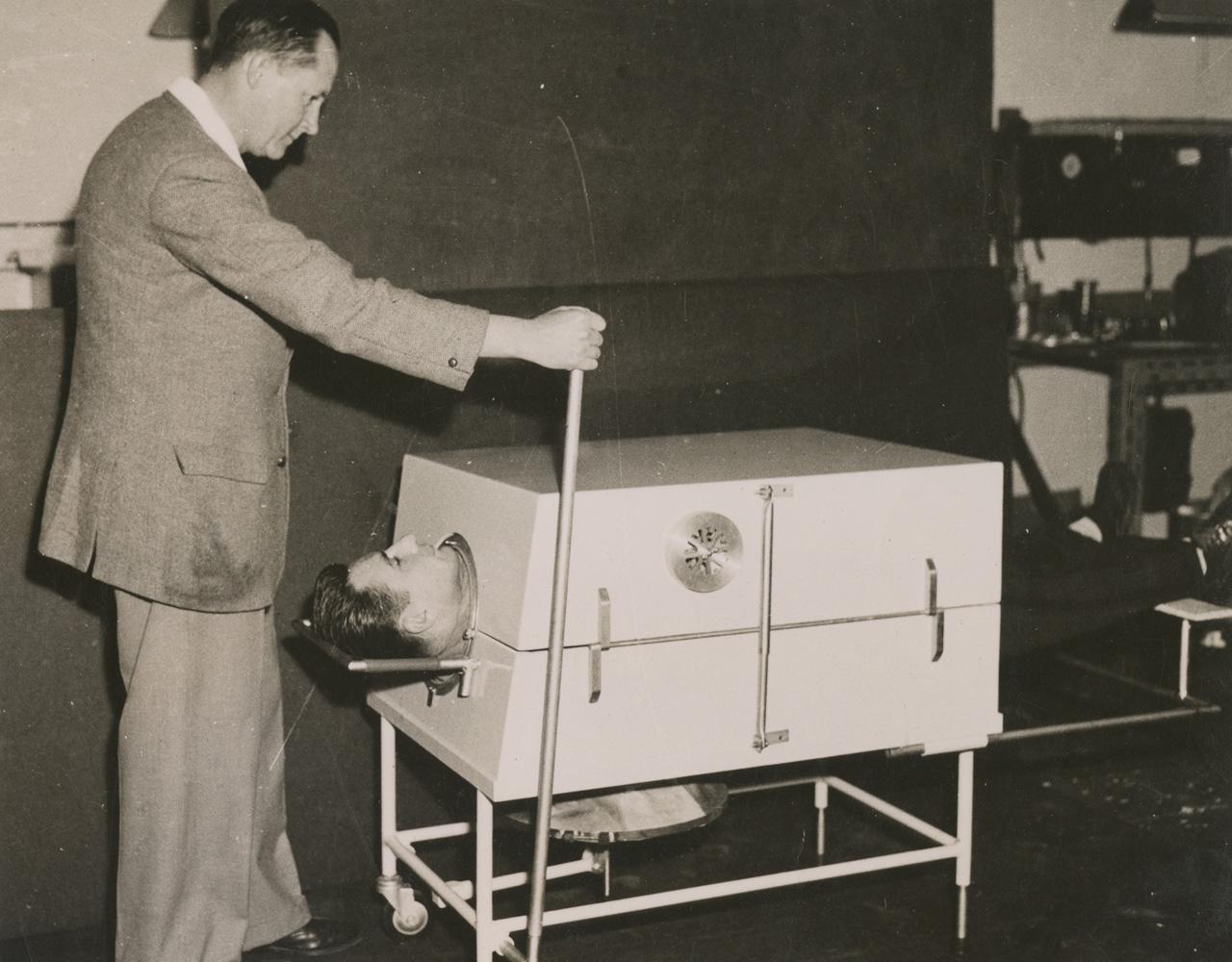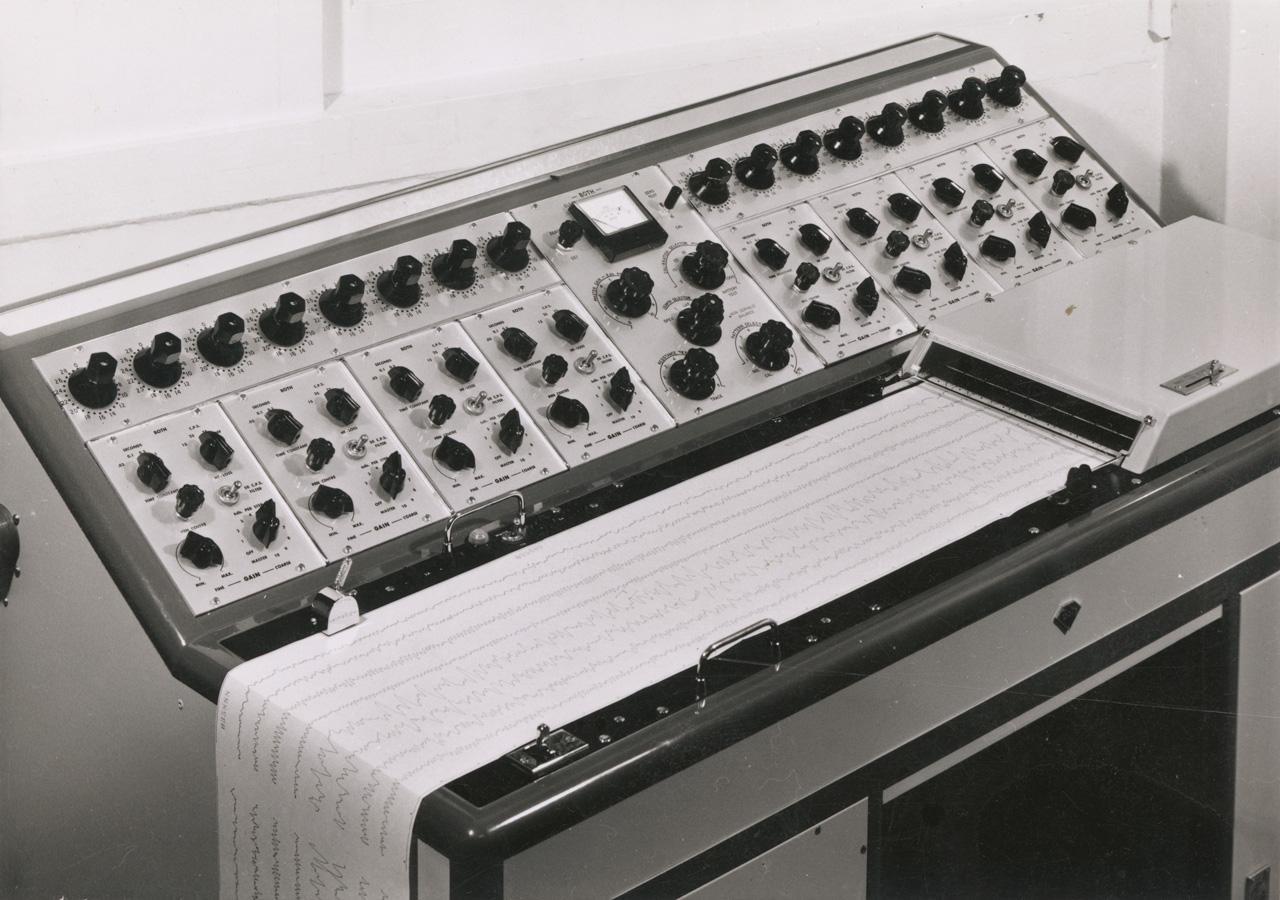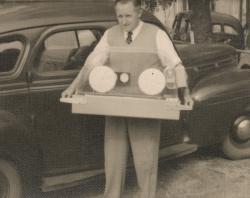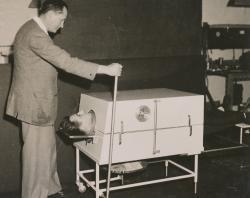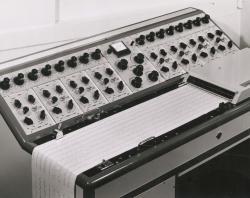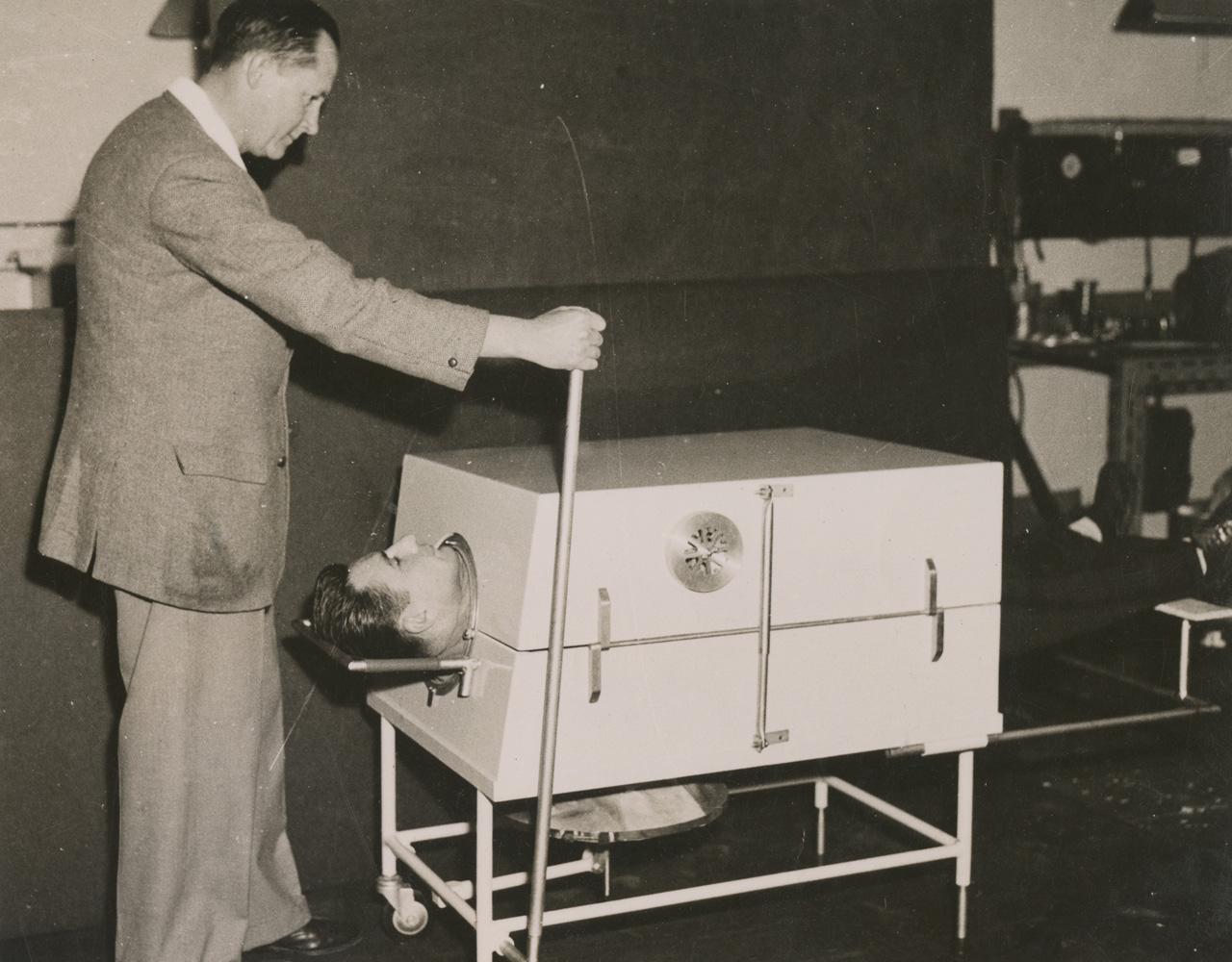
The amazing inventions of the Both Brothers
Bringing history to life, a story from the archives.
The brothers were born in Caltowie into an immigrant German family. In 1932 Ted, as Edward was known, started a company ‘E.T. Both’ and was joined by the youngest of his four siblings, Donald. Over the years they made significant contributions to medical equipment, with possibly their most innovative product being the Both Respirator - a wooden iron lung designed for the SA Health Department in response to the global poliomyelitis epidemic in 1937. There had been an earlier American version, but the Both design was simpler and cheaper to make – so much so that when the epidemic reached London, Ted Both moved there to help supply his version to all parts of Britain and what was then the British Empire. In 1940 Both was awarded an OBE for this work.
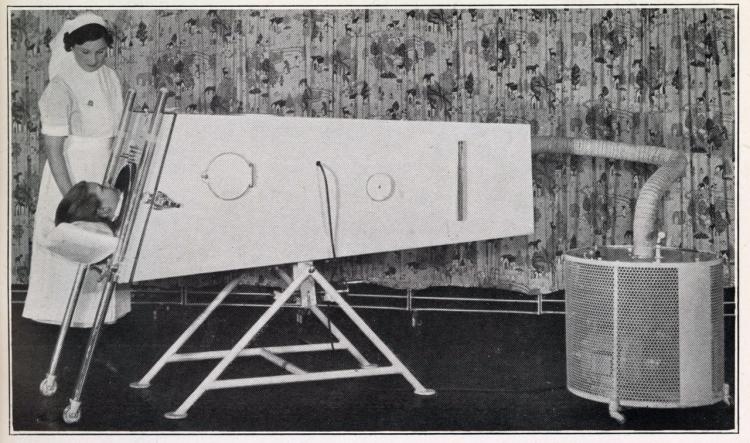
Nicknamed ‘The Edison of Australia’, some of Ted Both's other productions are well-known even though few know he was the man behind the product. These include:
- A device to record the rate of machine-gun fire, and another which instantly detected flaws in gun-barrels.
- An electric bread delivery van created in response to petrol rationing. This three-wheeled, front wheel drive van could turn in its own length making manoeuvring simple.
- The Visitel which was a forerunner to the fax machine. The device could transmit handwriting or a drawing over any distance while it was being written or drawn.
- The Davis Cup scoreboards.
- The 1956 Melbourne Olympics scoreboard which contained 10,000 electric light globes.
Ted Both also developed a prototype electric scooter which had an electric motor and two batteries. The prototype in the photograph below is being ridden by Mrs Yvonne Both, wife of Don Both. Sadly, this was never put into production, but the 12-volt scooter was produced in 1941.
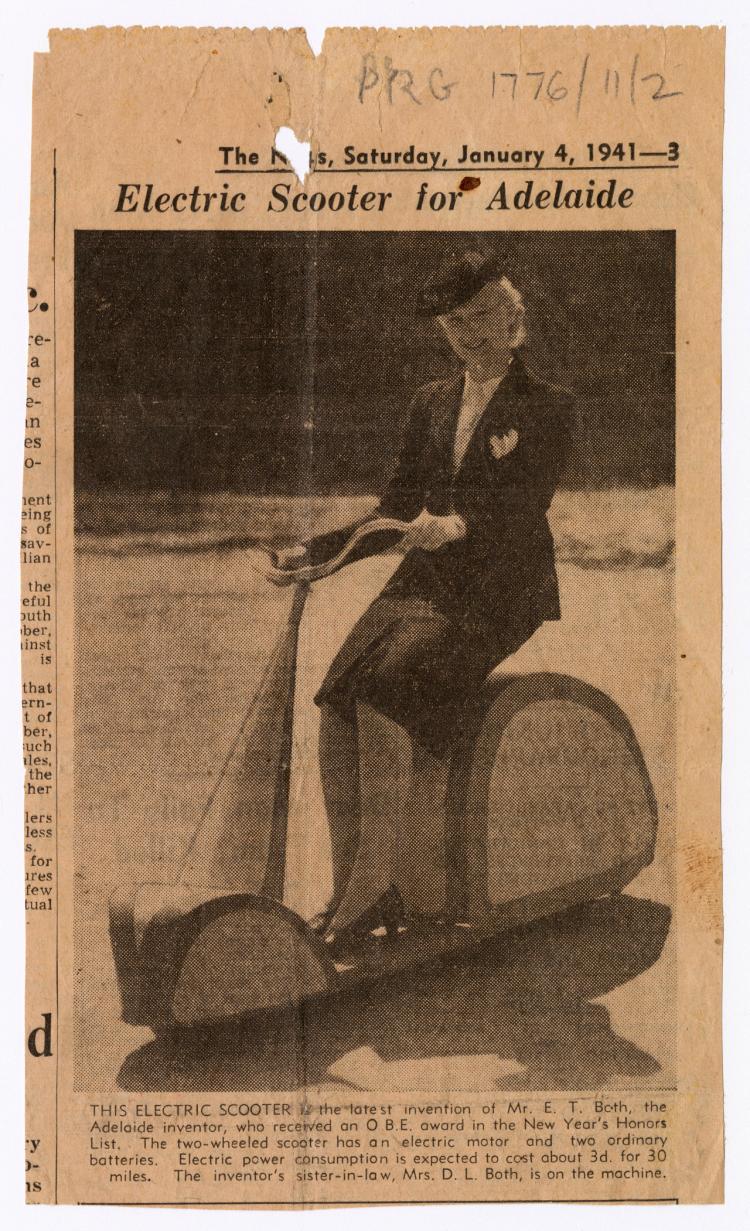
Among the records held at the State Library is a letter from the Department of Patents, written in 1941, denying the brothers a patent for the Visitel. It being wartime, the patent was rejected under provisions of the National Security Regulations with the rejection letter reading:
“A use to which the invention can be put, and to which it lends itself admirably, is for ‘spotting’ by aircraft flying over territory which it is desired to map or sketch in the essential points, the observer transmitting – by means of the aircraft’s radio - to a receiving station where the sketches would be immediately reproduced for observation."
Another letter held, written in 1966, is from Reg Grundy, the Channel 10 game show king. He puts in an order for scoring ‘light boxes’ which were intended to
"be recessed into the front of the long contestants’ desk".
All their apparatus was manufactured in the Adelaide workshop of Both Equipment Limited which was situated on the end of the western wing of the old Armoury and Mounted Police Barracks behind the SA Museum, before being relocated to Tavistock Street (now Frome Street) and later to King William Street in Kent Town. The original site has since been demolished.
Don stood for election for the Burnside Council in 1967 under the slogan 'Living in your own ward sharing your interests'. Edward Both married Lily Eileen Naughton in 1937 in Victoria, while Donald married Yvonne Watkins in 1939. Neither man had children. Edward died on 18 November 1987 in Mount Beauty, Victoria and Donald died on 1 September 2005 in South Australia.
Interesting additional fact - Ted and Don Both were also first cousins once removed of Otto and Joe Rau whose taxidermy work is highlighted in the Mortlock Wing of the State Library and can still be seen on display in the South Australian Museum. You might like to read more about the Tiger and the Taxidermists.
Source: Graham Jaunay 'The Both Brothers'.
Written by Mary Ryan, Archivist, Archival Collections
